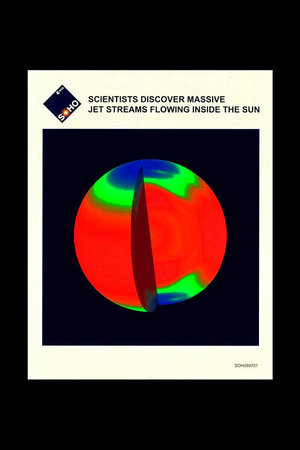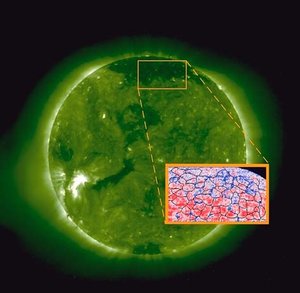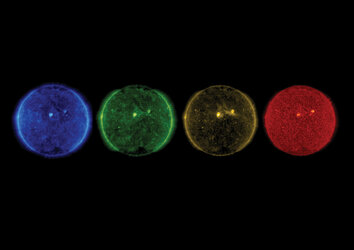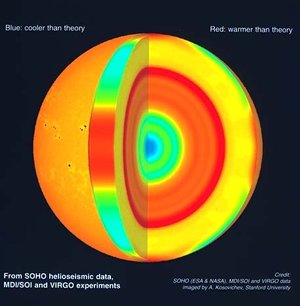
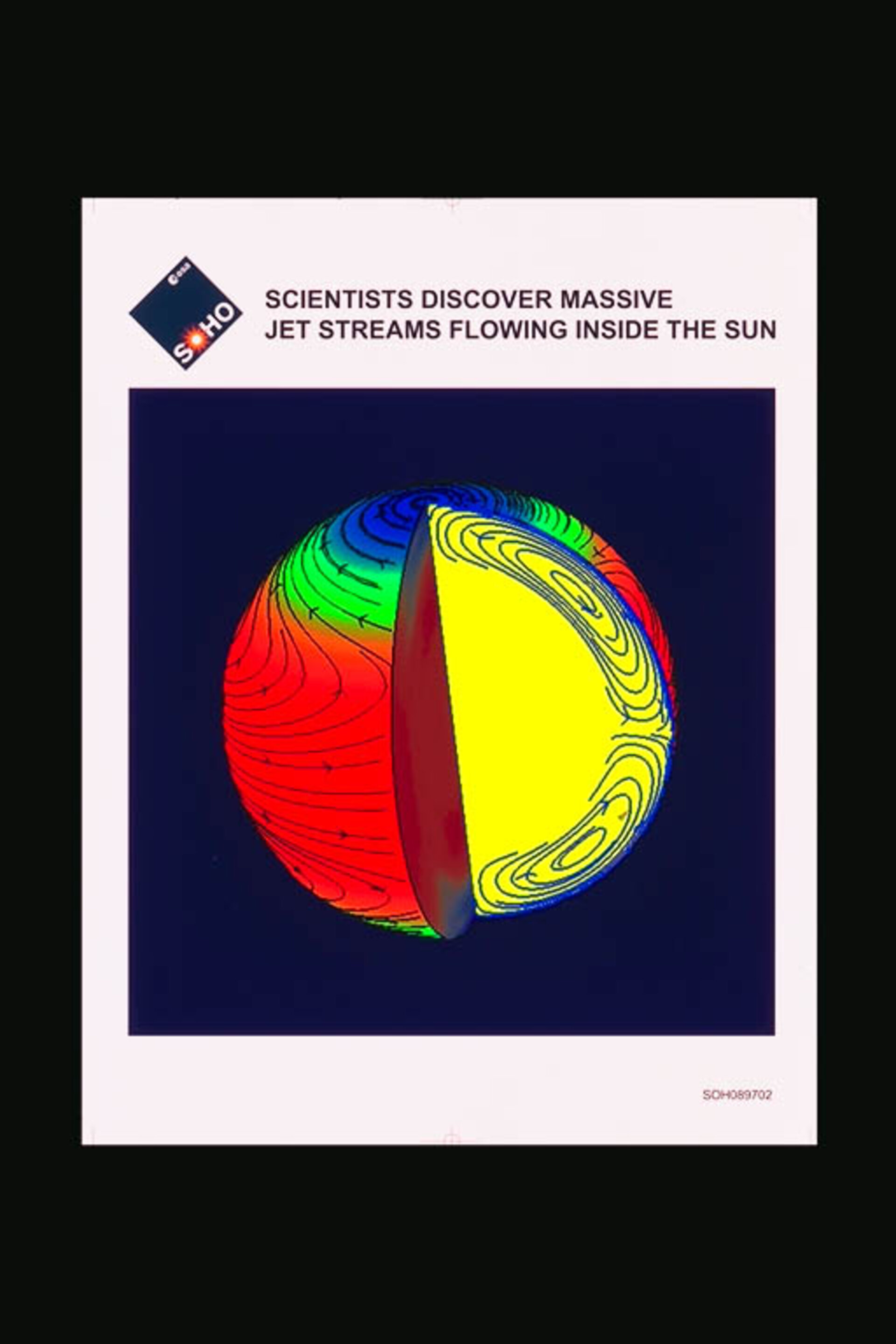
Soho observes flow of solar surface material
This image is a graphical representation of the surface flow from the equator to the poles of the Sun. The flow lines overlay an image of the rotation speed at the Sun's surface, taken using the Michelson Doppler Imager (MDI) instrument on ESA's Solar and Heliospheric Observatory (Soho) spacecraft over a period of 12 months ending in June 1997. The false colours represent speed; red material is rotating faster than the blue. As this material rotates, it is also flowing toward the poles at a relatively slow velocity of about 80 km/h. The lines represent how this motion would appear if you could stand on the surface of the Sun about 30° from the equator, and move with the same speed as the material there. If you were at this position in the northern hemisphere, material closer to the equator would appear to move to the right of the image as it flowed north, because it is rotating faster. Material closer to the north pole would appear to move to the left as it flowed north, because it is rotating slower. The cutaway represents the observed polar flow 25,000 km beneath the surface and a hypothetical, slower moving return flow from the poles to the equator, estimated to be 200,000 km beneath the surface. [Image Date: 01-06-97] [97.09.006-002]

